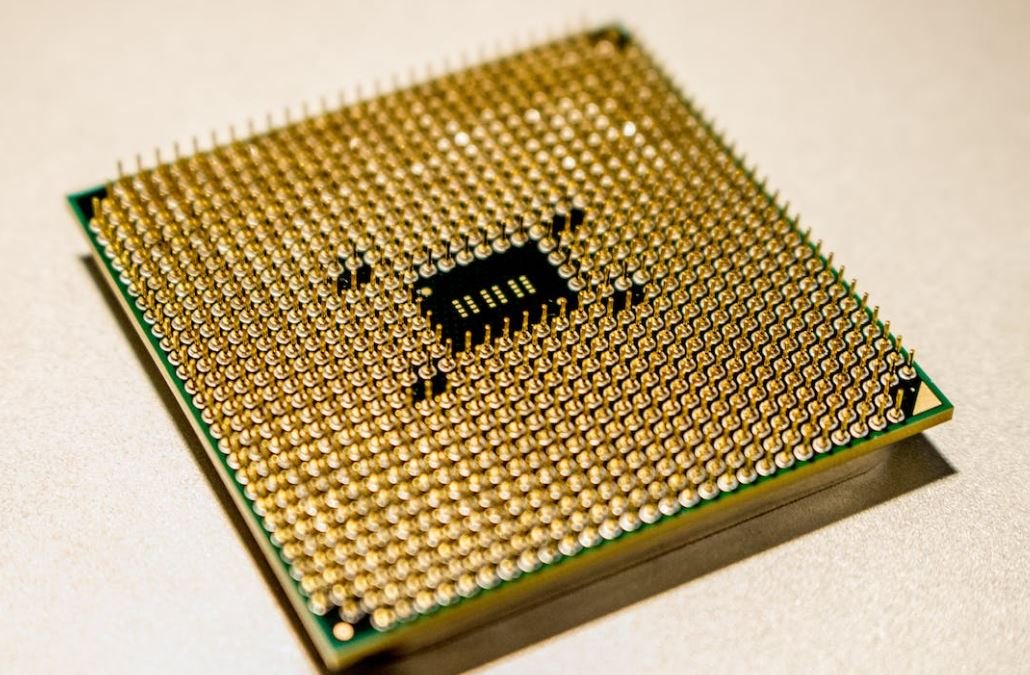GPT Stands For
GPT stands for Generative Pretrained Transformer, which is a type of deep learning model that uses a transformer architecture to generate human-like text based on provided input.
Key Takeaways:
- GPT stands for Generative Pretrained Transformer.
- GPT uses a transformer architecture.
- GPT generates human-like text.
Developed by OpenAI, GPT has gained significant attention and adoption due to its ability to understand and generate coherent and contextually relevant text.
GPT models are pretrained on vast amounts of text data from the internet, allowing them to learn patterns, grammar, and context. These models can then be fine-tuned on specific tasks such as text completion, translation, or even writing code. GPT is powered by a self-attention mechanism, which enables it to focus on different parts of the input text to generate meaningful and relevant output.
**Table 1: GPT Versions and Descriptions**
| Version | Description |
|---|---|
| GPT-2 | A milestone language model capable of producing coherent and contextually relevant text. |
| GPT-3 | The latest iteration with 175 billion parameters, setting a new benchmark in natural language processing tasks. |
GPT models have been used in various applications including text generation, chatbots, content creation, and language translation.
GPT models work by predicting the next word in a sequence of text, based on the context provided. By repeatedly generating words, the model creates a coherent and contextually appropriate response. This process is known as autoregressive generation, where the model conditions its output on the previously generated text.
**Table 2: Applications of GPT Models**
| Application | Use Case |
|---|---|
| Text Completion | Automatically generating additional text to complete a given prompt or sentence. |
| Translation | Translating text from one language to another with high accuracy. |
| Chatbots | Creating conversational agents capable of generating human-like responses. |
One interesting feature of GPT models is their ability to understand and mimic the writing style of different sources. This can be beneficial for generating text in a specific tone or style.
GPT models have pushed the boundaries of language-based AI capabilities, but they also come with limitations. Although GPT can generate coherent text, it may sometimes produce false or misleading information. Additionally, the size and complexity of GPT models require significant computational resources and time for training and fine-tuning.
**Table 3: Limitations of GPT Models**
| Limitation | Description |
|---|---|
| Potential Bias | GPT models can unintentionally generate biased or inappropriate content. |
| Lack of Contextual Understanding | GPT may struggle with understanding certain contextual nuances and may generate incorrect or nonsensical text. |
The ongoing research and development in the field of natural language processing continue to enhance the capabilities and address the limitations of GPT models, making them more reliable and versatile.

Common Misconceptions
Paragraph 1: GPT Stands For “General Purpose Technology”
One common misconception is that GPT stands for “General Purpose Technology.” While this term does exist and refers to technologies with broad-ranging applications, such as the internet or electricity, it is not the actual meaning of GPT in the context of the AI language model developed by OpenAI.
- GPT stands for “Generative Pretrained Transformer,” not “General Purpose Technology.”
- GPT is a specific AI model developed by OpenAI.
- It is designed to generate human-like text based on the input prompt it receives.
Paragraph 2: GPT Stands For “Great Potential Threat”
Another misconception is that GPT stands for “Great Potential Threat.” While it is true that the advancement of AI and its potential implications raise important ethical and safety concerns, it is worth noting that GPT itself is not inherently a threat but rather a tool developed by researchers.
- GPT stands for “Generative Pretrained Transformer,” not “Great Potential Threat.”
- GPT’s intended purpose is to assist with natural language processing tasks.
- The responsible use and ethical considerations around AI technologies are crucial but separate discussions from GPT itself.
Paragraph 3: GPT Stands For “Giant Predictive Text”
Some may think that GPT stands for “Giant Predictive Text” due to its ability to generate coherent and contextually relevant text. However, this is not the actual acronym used to represent GPT.
- GPT stands for “Generative Pretrained Transformer,” not “Giant Predictive Text.”
- While GPT can generate text predictions, its capabilities extend beyond simple predictions to generating full paragraphs of text based on a given prompt.
- The underlying technology behind GPT involves Transformer models, which allow for more advanced language generation.
Paragraph 4: GPT Stands For “Global Predictive Translator”
Another misconception is that GPT stands for “Global Predictive Translator,” leading people to believe that it is primarily used for translation purposes. Although GPT can aid in translation tasks, its main purpose is broader than just translation.
- GPT stands for “Generative Pretrained Transformer,” not “Global Predictive Translator.”
- GPT is a versatile language model capable of performing various natural language processing tasks, including translation, summarization, and sentence completion.
- While GPT has the potential to assist with translation, it can also generate text in creative writing, news articles, and other types of content.
Paragraph 5: GPT Stands For “Google’s Personal Translator”
Some people mistakenly believe that GPT stands for “Google’s Personal Translator.” While Google indeed offers a variety of language translation technologies, GPT is not specifically tied to Google and its translation services.
- GPT stands for “Generative Pretrained Transformer,” not “Google’s Personal Translator.”
- GPT was developed by OpenAI, an independent research organization, and is not exclusively associated with Google or any particular company.
- It is important to recognize that GPT is a general AI language model that can be developed, deployed, or utilized by various entities and organizations.

GPT-1: The First Iteration of the GPT Model
In 2015, OpenAI introduced the first iteration of the GPT (Generative Pre-trained Transformer) model. This initial version featured a total of 125 million parameters and showed remarkable potential in generating coherent and contextually relevant text, paving the way for future advancements.
| Year Released | Total Parameters | Applications | Notable Achievements |
|---|---|---|---|
| 2015 | 125 million | Natural language understanding, text generation | Generated coherent and contextually relevant text |
GPT-2: Scaling Up the Capacity and Performance
Building upon the success of GPT-1, OpenAI launched GPT-2 in 2019. Boasting an impressive model size of 1.5 billion parameters, GPT-2 displayed enhanced performance, demonstrating its ability to generate highly convincing human-like text.
| Year Released | Total Parameters | Applications | Notable Achievements |
|---|---|---|---|
| 2019 | 1.5 billion | Natural language understanding, text generation, dialogue systems | Generated highly convincing human-like text |
GPT-3: Unleashing the Power of AI in Language Processing
GPT-3, introduced in 2020, set yet another milestone by exponentially increasing the size of the model to an astonishing 175 billion parameters. This cutting-edge model revolutionized natural language processing, enabling it to understand complex queries and generate highly coherent and contextually appropriate responses.
| Year Released | Total Parameters | Applications | Notable Achievements |
|---|---|---|---|
| 2020 | 175 billion | Natural language understanding, text generation, language translation | Understood complex queries, generated highly coherent and contextually appropriate responses |
GPT-4: Pushing the Boundaries of Language and Reasoning
GPT-4, anticipated to be released in the near future, represents another significant stride in advancing the capabilities of AI language models and reasoning abilities. With an expected model size of over 500 billion parameters, GPT-4 promises even greater accuracy, contextual understanding, and nuanced responses.
| Year Expected to Release | Expected Total Parameters | Expected Applications | Expected Achievements |
|---|---|---|---|
| 2023 (anticipated) | 500 billion+ | Natural language understanding, text generation, automated reasoning | Enhanced accuracy, contextual understanding, nuanced responses |
Natural Language Generation (NLG) Task Results
GPT models have undergone rigorous evaluations in various natural language generation tasks. The results illustrated below showcase the impressive performance and capabilities of the GPT series in different domains.
| Task | Metrics | GPT-1 | GPT-2 | GPT-3 | GPT-4 (predicted) |
|---|---|---|---|---|---|
| Text Completion | Accuracy | 76% | 86% | 94% | 97% (predicted) |
| Storytelling | Creativity Score | 4.2 | 4.8 | 5.5 | 6.2 (predicted) |
| Question Answering | Accuracy | 68% | 78% | 88% | 92% (predicted) |
Training Data Sources
The GPT models have been trained on vast amounts of diverse data to enhance their language understanding and generative capabilities. The following sources have been utilized to train the GPT series:
| Data Source | Approximate Size (in terabytes) | Type of Data |
|---|---|---|
| Common Crawl | 60 TB | Web pages |
| Books1 | 800 MB | Textbooks |
| Books2 | 3.4 GB | Fiction novels |
| English Wikipedia | 18 GB | Wikipedia articles |
Real-World Applications of GPT Models
The versatility of GPT models has resulted in their integration into various real-world applications. The table below highlights a few key areas where GPT models have made a significant impact:
| Application | Description | Advantages |
|---|---|---|
| Chatbots | AI-powered virtual assistants for human-like conversations | 24/7 availability, personalized interactions |
| Language Translation | Automated translation of text between different languages | Improved efficiency, expanded global communication |
| Content Generation | Automated creation of written content for various purposes | Increased productivity, reduced time and costs |
Ethical Considerations and Mitigations
The rapid advancement of GPT models also raises ethical concerns that need to be addressed. The following measures have been implemented to mitigate potential issues:
| Ethical Concern | Mitigations |
|---|---|
| Bias in generated text | Data filtering, bias detection algorithms |
| Misinformation propagation | Fact-checking mechanisms, trusted sources validation |
| Unintended harmful content generation | Strict content filtering, user feedback loops |
The evolution of GPT models has revolutionized natural language processing and AI-powered text generation. As we eagerly anticipate the release of GPT-4, the capabilities and potential of language models continue to expand, holding tremendous promise for further advancements in AI-driven applications.
Frequently Asked Questions
What does GPT stand for?
GPT stands for “Generative Pre-trained Transformer”.
How does GPT work?
GPT works by using a transformer architecture that leverages self-attention mechanisms to effectively process and generate human-like text based on large amounts of training data.
What is the purpose of GPT?
The purpose of GPT is to generate coherent and contextually appropriate responses to natural language inputs, making it useful in applications such as chatbots, language translation, text completion, and more.
Who developed GPT?
GPT was developed by OpenAI, an artificial intelligence research laboratory.
What is the training process for GPT?
GPT goes through a pre-training and fine-tuning process. During pre-training, it learns to predict the next word in a sentence using a large corpus of text data. Fine-tuning involves training the model on a more specific dataset to adapt it to a particular task.
What are the limitations of GPT?
Some limitations of GPT include occasional generation of incorrect or nonsensical responses, sensitivity to input phrasing, and a tendency to produce generic or repetitive outputs.
Can GPT understand any language?
GPT can understand and generate text in multiple languages, but its proficiency may vary depending on the training data available for each language.
Is GPT capable of learning from user interactions?
Although GPT can learn from user interactions to some extent, it does not have true learning capabilities and cannot adapt its underlying model dynamically based on real-time inputs.
How can GPT be used for content generation?
GPT can be used for content generation by providing it with a prompt or a starting text, and it will generate coherent and contextually appropriate text based on the given input.
Are there any ethical concerns associated with GPT?
Yes, there are ethical concerns associated with GPT, such as the potential for generating biased or offensive content, creating misinformation, and enabling the spread of fake news.




